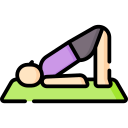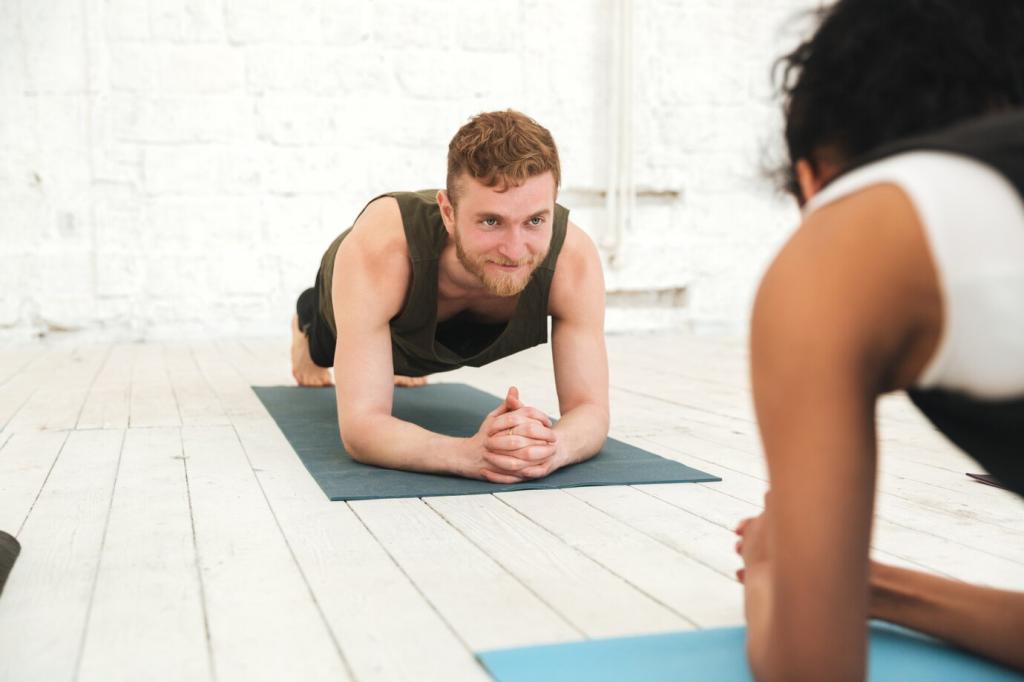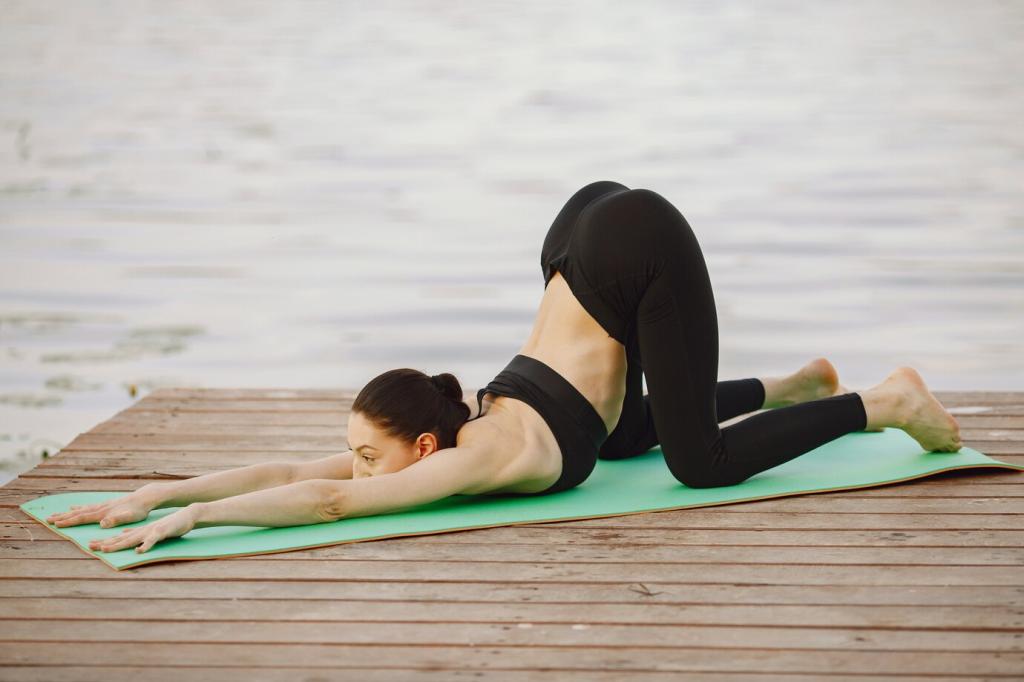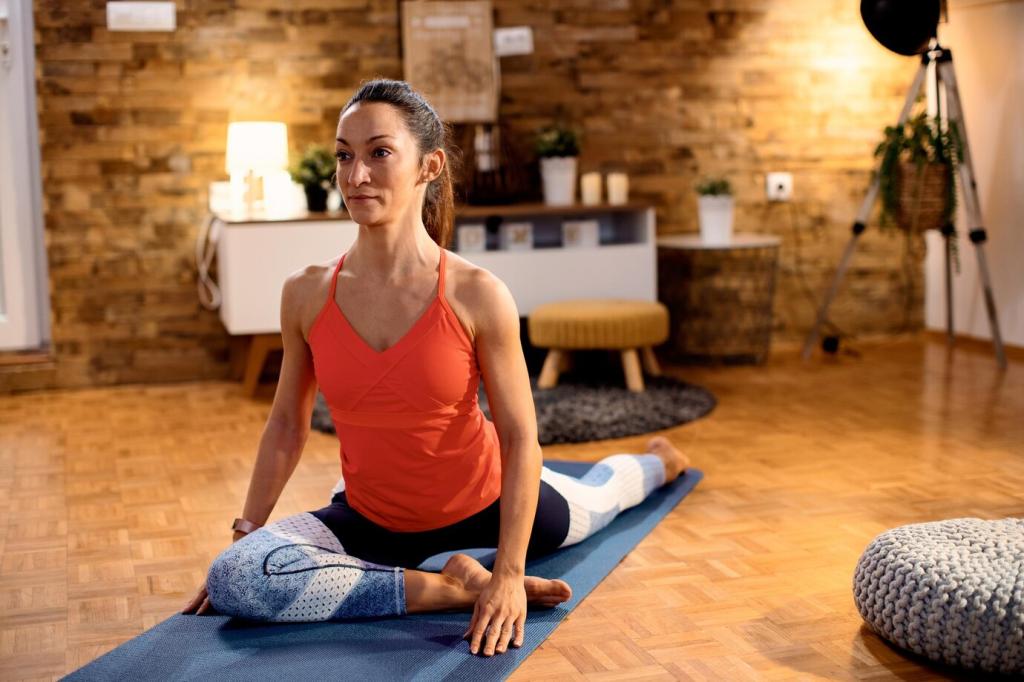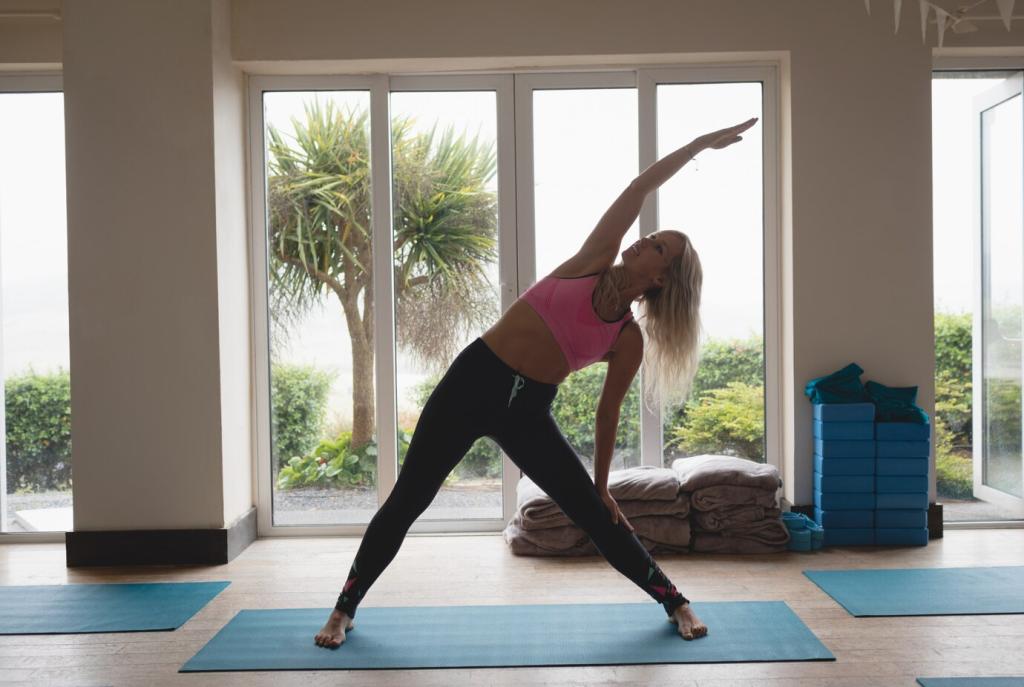Two Plug-and-Play Sequences With Breath Cues
Begin with three diaphragmatic breaths. Flow: Sunbreath x3, Cat–Cow x5, Low Lunge with soft Ujjayi x3 breaths each side, Standing Side Reach x3. Keep inhales for spacious lifting, exhales for softening. Close with one box breath cycle to focus your day.
Two Plug-and-Play Sequences With Breath Cues
Start seated with straw breathing x5 slow rounds. Sequence: Seated Side Bend x3 each side, Supported Forward Fold 5 breaths, Supine Figure Four 5 breaths each, Knees-to-Chest 3 breaths. Lengthen exhales to land the day, finishing with three-part breath in stillness.
